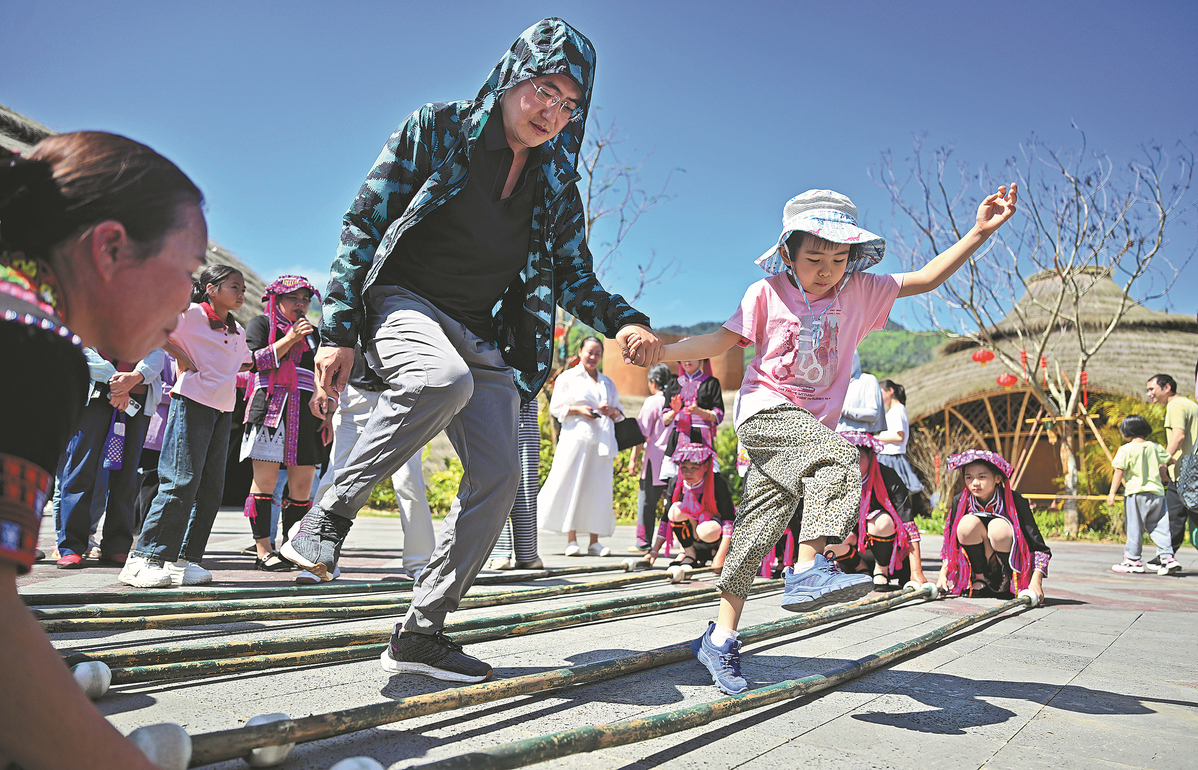How smaller tourist destinations gained big time in February
By Zhu Wenqian | China Daily | Updated: 2024-03-04 09:22

That domestic tourism boomed during the eight-day Spring Festival holiday last month is well known, but what's not so well known is that this year the rush was different — even small cities and towns attracted many tourists, both Chinese and foreign. How do I know?
As is customary, I visited my hometown in Yangzhou in Jiangsu province, East China, for the holiday. Yangzhou is a third-tier city, but known for its beautiful sightseeing spots. What surprised me at the local airport was the sight of a large crowd of tourists.
More surprises lay in store for me. I spotted a number of foreigners on the streets and at hotels. This is the first time that I saw such a large number of foreign tourists in my hometown.
Local sightseeing spots were all filled with people. Data that I compiled later confirmed my initial deductions — the 2024 Spring Festival has proved to be a watershed in the development of domestic tourism.
China has 186 small airports in third-tier or smaller cities, excluding renowned tourist hot spots like Dali and Lijiang in Yunnan province. During the holiday, flight bookings to small airports and entry tickets at local sightseeing spots both nearly doubled year-on-year, Qunar, a Beijing-based online travel agency, found.
Bookings at luxury hotels in third-tier or smaller cities more than doubled over the 2023 festival period, it said. Many people chose to stay at hotels in their own hometowns to give the tale of traveling for traditional family reunions a twist.
This year, popular small cities included Chongzuo in Guangxi Zhuang autonomous region, Dehong in Yunnan province and Taizhou in Zhejiang province, Qunar said.
"The longer holiday has driven people's enthusiasm for travel. The number of people who took flights on the second day of the Chinese New Year exceeded the number of people who went back to their hometowns for reunions on Chinese New Year's Eve," said Xiao Peng, a researcher at the big data research department of Qunar.
Typically, the Spring Festival travel rush lasts 40 days in China. This year, it started on Jan 26 and will end on Tuesday. The number of inbound tourists jumped more than 100 percent compared with the figures recorded in November and December, according to data from Tianjin Airlines.
Most inbound passengers were Chinese traveling from abroad for family reunions in China. Passenger demand for flights from Japan to China was high. During the holiday, the average passenger load factor of Tianjin Airlines' flights from Osaka, Tokyo and Nagoya to Tianjin reached 83.7 percent.
Expectedly, after the holiday, passenger flows as well as flight and hotel bookings in popular tourism cities across China gradually declined toward Lantern Festival.
For instance, the price of a Tianjin-Seoul flight ticket fell to as low as 230 yuan ($32), excluding taxes and fees, creating one more option for passengers to travel during off-peak periods, Tianjin Airlines said.
























